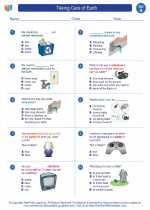Telescope: Exploring the Universe
A telescope is an optical instrument that helps us observe distant objects in the sky. It has revolutionized our understanding of the universe by allowing us to see celestial bodies that are beyond the reach of our naked eyes. Telescopes come in various types and sizes, each designed for specific purposes such as observing planets, stars, galaxies, and other astronomical phenomena.
Types of Telescopes
There are three main types of telescopes: refracting telescopes, reflecting telescopes, and compound telescopes. Each of these types uses different methods to gather and focus light to produce an image.
- Refracting Telescopes: These telescopes use lenses to bend light and form an image. The most common example of a refracting telescope is the traditional "spyglass" design.
- Reflecting Telescopes: Reflecting telescopes use mirrors to gather and focus light, allowing for larger apertures and clearer images. The famous Hubble Space Telescope is a prime example of a reflecting telescope.
- Compound Telescopes: Compound telescopes combine lenses and mirrors to form an image. They often use a combination of lenses and mirrors to reduce optical aberrations and improve image quality.
How Telescopes Work
Telescopes work by collecting and focusing light from distant objects. The primary components of a telescope include the objective lens or primary mirror, the eyepiece, and the focusing mechanism. When light enters the telescope, it is gathered and focused to form an image that can be magnified and viewed through the eyepiece.
Using a Telescope
When using a telescope, it's important to consider factors such as magnification, field of view, and the tracking of celestial objects. Understanding how to properly align and focus the telescope is crucial for obtaining clear and detailed observations of the night sky.
Study Guide
To learn more about telescopes, consider exploring the following topics:
- Key components of a telescope, including the objective lens, eyepiece, and mount
- Different types of telescopes and their unique features
- How telescopes have contributed to our understanding of the universe
- Practical tips for observing celestial objects using a telescope
- Famous telescopes and their significant discoveries
By studying these topics, you'll gain a deeper appreciation for the incredible impact telescopes have had on our exploration of the cosmos.
Happy stargazing!
.◂Science Worksheets and Study Guides First Grade. Taking Care of Earth

 Worksheet/Answer key
Worksheet/Answer key
 Worksheet/Answer key
Worksheet/Answer key
 Worksheet/Answer key
Worksheet/Answer key
 Vocabulary/Answer key
Vocabulary/Answer key
 Vocabulary/Answer key
Vocabulary/Answer key
